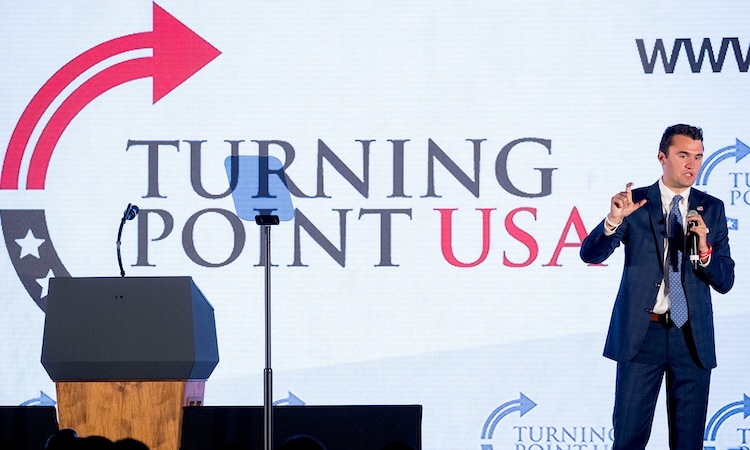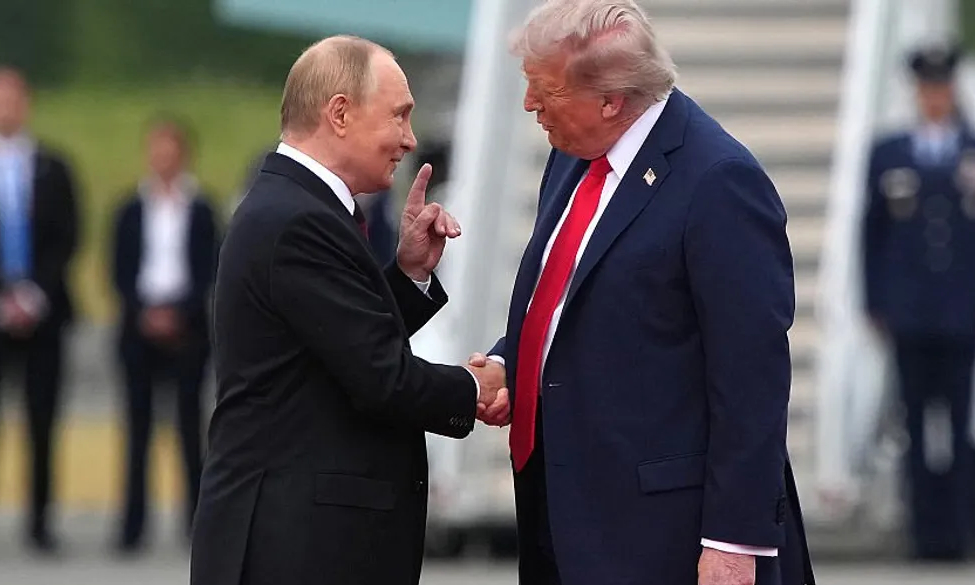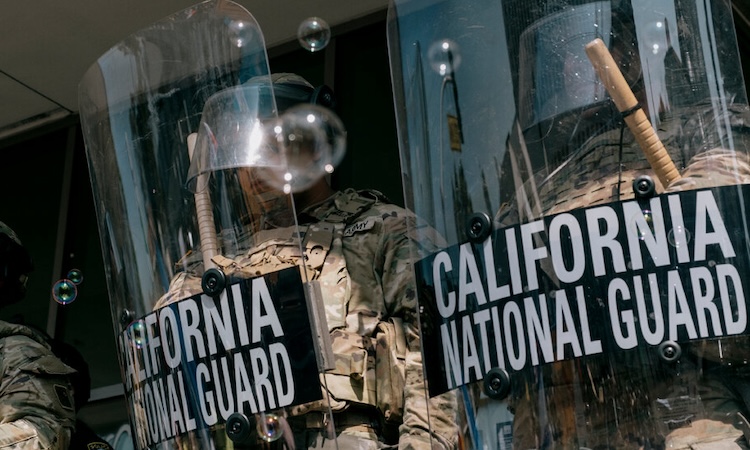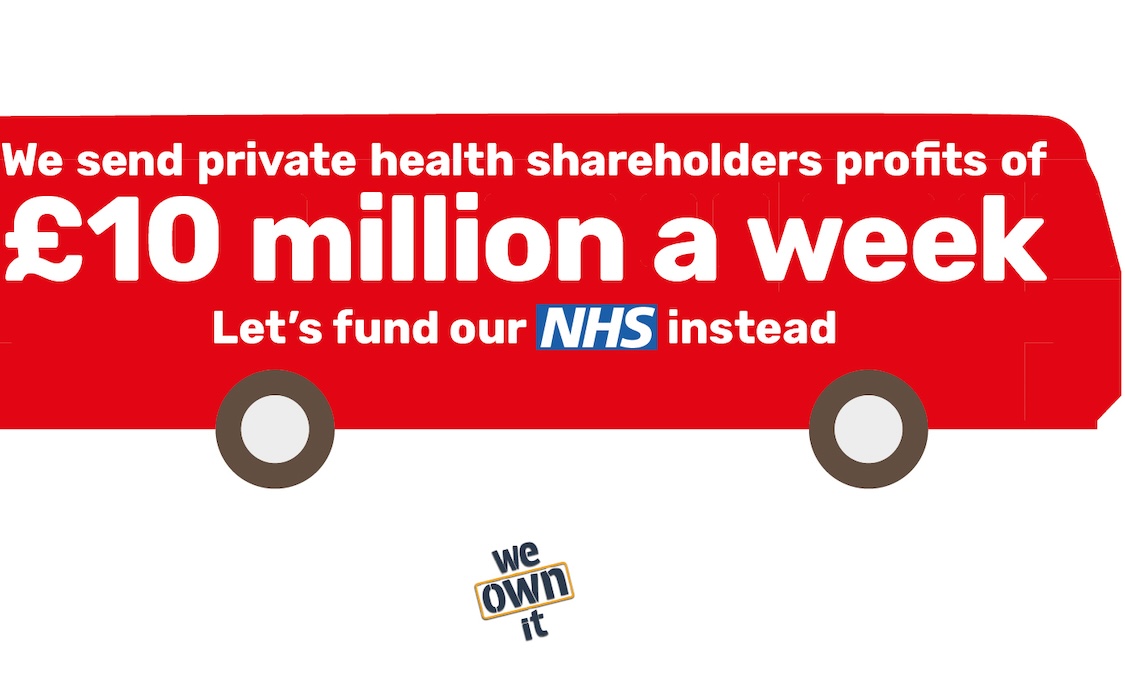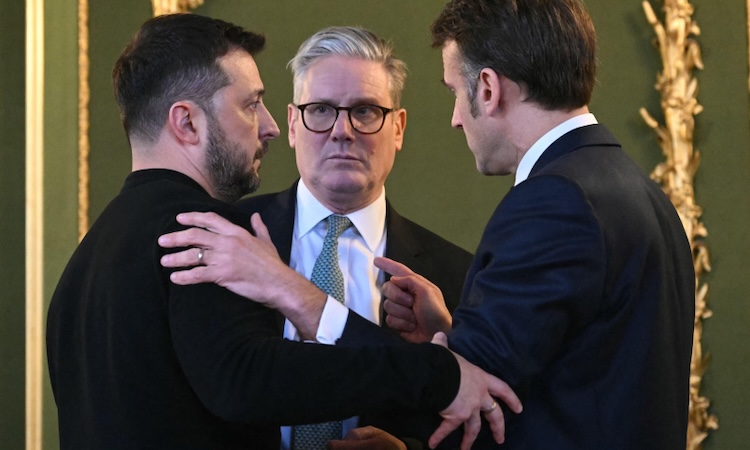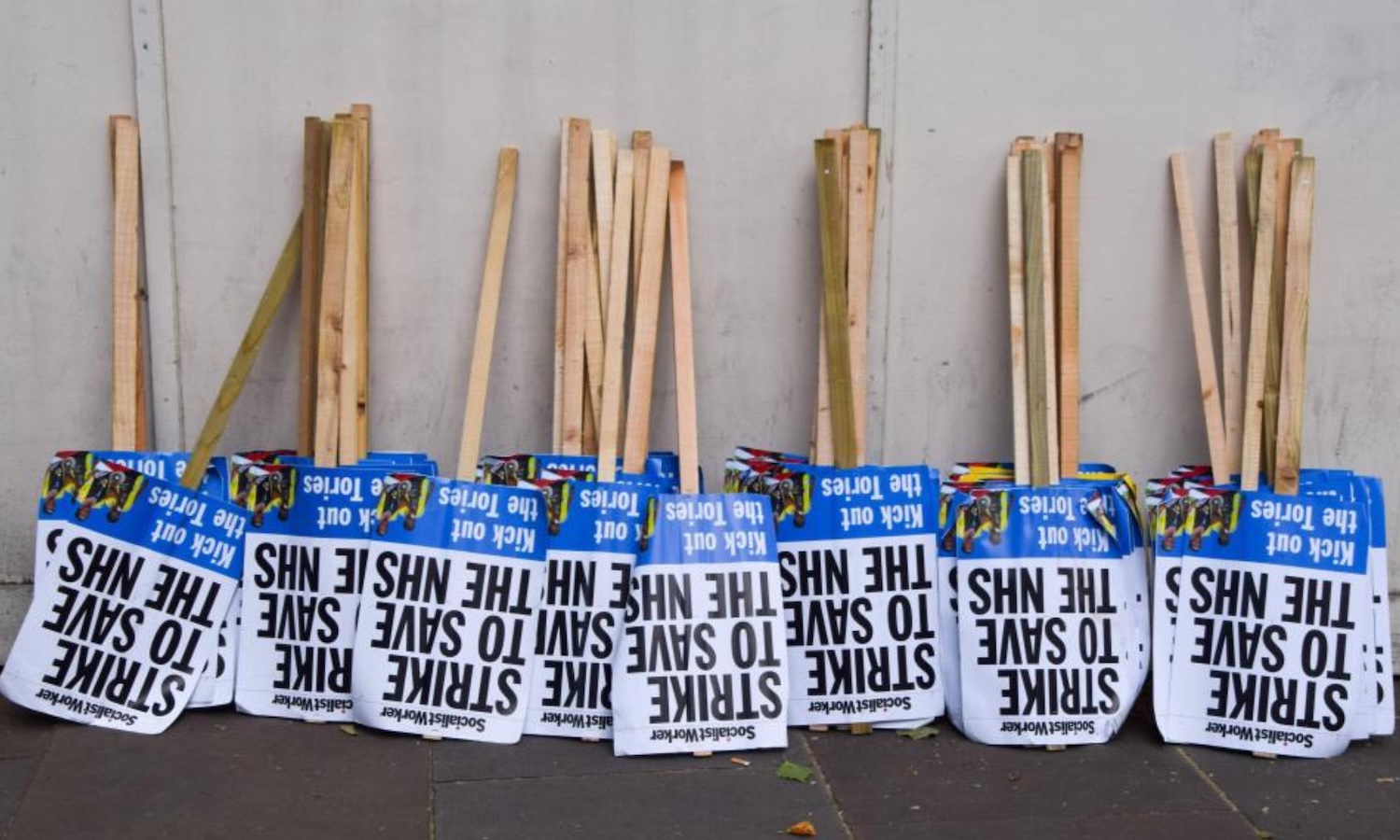Listen to this article on SoundCloud
On 25 May, an African-American man was murdered by the US police. George Floyd, a 46-year-old man, was arrested in Minneapolis, Minnesota after he was accused by a local store employee of paying for cigarettes with a counterfeit $20 bill.
Seventeen minutes after the first police car arrived at the scene, Mr Floyd was unconscious, having been pinned beneath the weight of three police officers with one officer, Derek Chauvin, kneeling forcefully upon his neck, pushing his whole body weight down upon his trachea and larynx for almost nine minutes, while onlookers filmed the incident in growing horror and disbelief.
The last minute of this suffocating act of ‘restraint’ – a standard police procedure that has led to many such cases of positional asphyxia – occurred after emergency medical services had arrived on scene.
At first, George Floyd called out for help; for his mother; then he became sickeningly limp and unresponsive. Still his attackers, serene in the protection offered by their uniforms and ‘the law’, continued to inflict injury, sublimely calm and unconcerned as to the foul and unjustified act of murder they were committing.
George Floyd subsequently suffered a respiratory and cardiac arrest whilst being conveyed to hospital, where he was pronounced dead on arrival. Video footage of the murder showed that Mr Floyd was not aggressive towards the police and did not resist arrest. He was entirely compliant. What the footage does show is that the arresting officers repeatedly ignored his pleas, and those of bystanders, that he couldn’t breathe.
So blatant was the murder, and so overwhelming the public anger, that Minneapolis police department was forced to sack all four police officers involved in the arrest the following day.
Separate autopsy reports released by independent and county medical examiners agreed in ruling that Mr Floyd’s death was a homicide attributable to the violent methods of restraint used upon him, but they differed in part on the cause. The state autopsy insisted that underlying health conditions and intoxicants may have contributed to Mr Floyd’s death in a thinly veiled attempt to cover up this graphically documented and widely witnessed state-murder.
Derek Chauvin, filmed with his knee on Mr Floyd’s neck has now been charged with second-degree (unpremeditated) murder and second-degree manslaughter. The three other officers involved – J Alexander Kueng, Tou Thao and Thomas Lane – have been charged with aiding and abetting murder.
At this time they intend to plead ‘not-guilty’ to their crime, and the prospects of a murder conviction are slim. According to NBC News, between 2005-19:
“Ninety-eight non-federal law enforcement officers have been arrested in connection with fatal, on-duty shootings, according to the Police Integrity Research Group’s data. To date, only 35 of these officers have been convicted of a crime, often a lesser offense such as manslaughter or negligent homicide, rather than murder.
“Only three officers have been convicted of murder during this period and seen their convictions stand. Another 22 officers were acquitted in a jury trial and nine were acquitted during a bench trial decided by a judge. Ten other cases were dismissed by a judge or a prosecutor, and in one instance no true bill [a legal procedure to dismiss charges against a defendant when the grand jury does not find enough evidence to charge them with violating a law] was returned from a grand jury.” (Police officers convicted for fatal shootings are the exception, not the rule by Janell Ross, 13 March 2019)
The initial response to Mr Floyd’s killing was the usual cover-up after a police murder, with none of the officers involved charged or arrested. But as the amateur video footage of his death went viral on social media and anger and frustration erupted into spontaneous civil unrest, protests began on 26 May in Minneapolis and quickly spread to hundreds of US cities, in all 50 states. Hundreds of thousands of enraged workers took to the streets, demanding justice for George Floyd and the arrest of the officers involved.
Such was the scale of unrest that the state struggled to maintain control. In extraordinary scenes on 28 May, officers were forced to flee in convoy from a Minneapolis police precinct, which was later torched by angry protesters.
In Washington DC on 29 May, more than 50 secret service agents were injured in clashes with protesters and President Donald Trump was forced to seek shelter in a bunker underneath the White House.
Whilst much has been made by politicians and the media of acts of violence, looting and arson, the protests have in fact been overwhelmingly peaceful. The response of the police to peaceful protests, meanwhile, has been to brutalise and intimidate demonstrators off the streets. Video footage has revealed officers using batons, tear gas, pepper spray and rubber bullets against protesters, bystanders and journalists – without warning and without provocation.
The US press freedom tracker reported at least 125 violations of press freedom in the first three days of the protests, including 20 arrests. One particularly gratuitous act involved the arrest of an entire CNN crew, by black-uniformed and gas-masked officers in full riot gear, without even the pretence of explanation, or justification – while they were broadcasting live on national television.
If this is the treatment of the ‘free press’, which is in reality a most powerful and vocal section of the US establishment, it doesn’t take much imagination to conceive the scale of violent repression meted out to the average worker involved in the protests – particularly if the workers were black or Hispanic.
To contextualise the scale of repression, at least 11,000 protesters were arrested in the first eight days following Mr Floyd’s murder, compared to 9,000 arrests in Hong Kong during an entire year of US-backed political destabilisation and street violence.
President Trump has responded to the protests with his usual bluster, referring to protestors as ‘professional anarchists’, ‘violent mobs’, ‘arsonists’, ‘looters’, ‘criminals’, ‘rider rioters’ and ’antifa’. Blaming the ‘far left’ for the violence, Trump bizarrely claimed he was going to designate antifa a “terrorist organisation”, something which he doesn’t have the authority to do and is in any case an impossibility since antifa is a loosely-applied political label that can hardly be described even as a movement and certainly is not an organisation with members or a leadership.
On 1 June, Trump threatened to deploy active-duty military personnel onto American streets by invoking the Insurrection Act (1807) as was done by George H Bush during the Los Angeles uprising that followed the acquittal of the police officers who had savagely beaten Rodney King in 1992.
More than 17,000 troops of the national guard were deployed across 23 states. In Washington DC itself, Trump deployed nine Blackhawk military helicopters and thousands of national guard troops from several states alongside 1,600 military police and active duty combat troops from the 82nd airborne division, who received written orders to equip themselves with bayonets.
During a week of conflicting orders, during which Trump demanded a deployment of 10,000 troops to Washington DC, the extent of public outrage at the violent murder of George Floyd and the subsequent violent intent and behaviour of state forces, combined with public support for the protestors’ aims and the peaceful nature of the protests, eventually led to the withdrawal of troops.
BLM as a Trump removal mechanism
It seems that Trump’s enemies amongst the ruling class are using the Black Lives Matter protests to attempt to oust him from office. Large sections of the ruling class loathe him, not only because he is a source of instability, stumbling from one political crisis to another, but because Trump cannot be relied upon by the US imperial elite to wage the right wars or support the right interests.
Five retired four-star generals (Dempsey, Kelly, Mullen, Mattis and Allen) were given a platform by media outlets to criticise Trump for his proposed use of the military on American soil, with each accusing him of sowing division. More than 280 former national security officials found the time to sign their names to a letter criticising Trump’s aggressive approach to the protests.
Trump is making a political gamble that his blusterous demands for ‘law and order’ will shore up his support in advance of the upcoming presidential election, as his popularity has dipped significantly in recent months owing to his handling of the health crisis combined with the terrible toll being taken by the economic crash.
“The Trump campaign has hit turbulence five months from election day. Earlier this year, Mr Trump was riding higher on a[n apparently] strong economy and soaring stock market [bubble] following his impeachment trial acquittal. Now, he faces multiple crises that cannot be solved by a tweet. The coronavirus death toll has topped 100,000 and 40 million Americans have lost their jobs and he is struggling to make the case for his re-election.
“A national outcry against systemic racism and rapidly shifting public opinion on the issue have also undermined the appeal of the president’s nativist rhetoric among crucial independent voters.
“Mr Biden has an average national lead of eight points, according to Real Clear Politics. He is also ahead in many swing states that Mr Trump won in 2016, including Wisconsin, Florida, Pennsylvania and Arizona. Mr Trump has only a very narrow lead in Texas, a state that has not voted for a Democrat since Jimmy Carter won the White House in 1976.” (Trump battles strong anti-racism tide in race with Biden by Demetri Sevastopulo, Financial Times, 11 June 2020)
Meanwhile, the Democrat party, also with eyes on the presidential election in November, has pinned all the blame for the unrest on Trump. The fact that the majority of violence meted out against protesters has occurred in blue states with Democrat governors and in cities with Democrat mayors seems to have eluded them.
It’s more than a ‘race riot’; it’s a rebellion
The civil unrest that has burst onto American streets since the death of Mr Floyd is interesting because historically, protests, rioting and civil disobedience have tended to be confined to the communities on the receiving end of police violence and racism. Such, for example, was the case during the long hot summer (1967), the Rodney King riots (1992), and more recently in Ferguson, Missouri (2014) after the police shooting of Michael Brown Jr.
By contrast, the spontaneous uprising of 2020 has affected every corner of the United States, as well as dozens of cities internationally. Protesters of every race and ethnicity have been motivated by revulsion at yet another murder of an unarmed black man by police, but also more broadly by the widespread injustices and rampant inequalities that workers experience under capitalism, made glaringly acute by the onset of the 2020 great capitalist economic depression.
A study carried out by a sociologist from the University of Maryland found that white Americans made up 65 percent of protesters in Washington, 61 percent of protesters in New York, and 53 percent of protesters in Los Angeles. (One big difference about George Floyd protests: many white faces by Amy Harmon and Sabrina Tavernise, New York Times, 12 June 2020)
Polling has indicated that the protesters are overwhelmingly supported in their actions against police violence by wide-ranging sections of American society. (Big majorities support protests over Floyd killing and say police need to change, poll finds by Scott Clement and Dan Balz, Washington Post, 9 June 2020)
The emergence of a multiracial rebellion is a new development, showing what appears to be a dawning awareness within the US working class of a shared common interest.
This is bad news for the US ruling class, which everywhere attempts to divide workers on racial and ethnic lines in order to obscure the fundamental class issues that capitalism creates. This time, it hasn’t worked!
The international spread of the rebellion gives further credence to the idea that this is more than a race riot focused upon a single issue. In more than 60 countries, workers joining the ‘Black lives matter’ protests may be fighting injustices caused by their own ruling classes, but the common denominator remains capitalism.
Upticks in revolutionary cycles often begin with simple demands – in this instance, justice for George Floyd. Outrage at ongoing police tyranny, oppression and murder is the spark, but not the ultimate cause of civil unrest. Deeper issues are not hard to discern, as multiple crises are currently converging upon the United States.
The government’s incompetent management of the Covid-19 crisis has led to at least 116,000 American deaths. In addition, 40 million are newly unemployed (and therefore also adding to the significant numbers without health insurance), with 16 million of these jobs losses expected to be permanent.
Rebellions, or uprisings, depending on the nomenclature you prefer, are by their very nature chaotic, sporadic, and at some level politically ‘unsophisticated’. Much has been made by bourgeois politicians and the media about violence – destruction of property and the looting of goods are, of course, features of all spontaneous uprisings.
However, there is a critical difference, which must be acknowledged, between the violence of the oppressors and the reaction of the oppressed. In reality, the damage caused by protestors’ looting and arson pales into insignificance when one considers that, during three months of the pandemic, whilst millions of workers have been facing terrible hardships, a select few amongst the billionaire class have increased their wealth by $434bn. There can be no question of who is really doing the looting.
Whilst it’s probable that this particular rebellion will fizzle out, being a spontaneous movement lacking direction and the necessary conscious and organised working-class political leadership, this does not detract from the main character of the events – namely, that they are a justified revolt against police killings and repression, racism and poverty.
By taking part, workers will have learned important practical political lessons about their power as a class, seeing how they were able to act with relative impunity when they acted together, shutting down cities and burning down police precincts. Had such a movement been nurtured correctly, with conscious revolutionary leadership, it would pose a genuine threat to the US monopoly capitalist political system; something of which the ruling class is very well aware.
Our rulers will attempt to extinguish the embers of rebellion
There is palpable fear amongst the US ruling class that this rebellion could be sustained, threatening the ‘peace and stability’ – or, rather, the veiled but profound and sustained ‘lawful’ violence of the US state machine, which allows capitalism not only to loot from the American people but also from peoples in all corners of the earth.
In this context we can see that all actions the ruling class takes in relation to the civil unrest are aimed at nullifying any threat to capitalism. The two obvious avenues for this are the granting of concessions to, and the sowing of divisions amongst, the working class.
Concessions to public anger – but don’t hold your breath for voluntary systemic change!
Concessions are at all times carefully calculated to deceive the workers into discontinuing the class struggle, and are already in effect.
After many decades of almost complete impunity, police officers in the US are suddenly being ‘held accountable’ for their actions. As previously mentioned, the police officers involved in the death of Mr Floyd have all been sacked and are facing criminal charges.
Another fatal police shooting of a black man, Rayshard Brooks, in Atlanta, Georgia on Friday 12 June has been deemed an unnecessary use of lethal force, and resulted in the immediate dismissal and a murder charge for the police officer who fired the shots, as well as the resignation of the police commissioner. This is entirely uncharacteristic of the usual ‘due process’ of American law, and entirely a result of the current political climate.
In Minneapolis, lawmakers have voted to disband the entire police department and provide a new ‘public safety system’. New York City mayor Bill de Blasio is promising to divert police department funding into youth and social services. Across the USA, at both state and city level, chokeholds are either being banned or reviewed as part of police reforms.
Anyone who is familiar with the disbanding of the ‘Special Patrol Group’ in Britain (following the police murder at their hands of New Zealand born teacher and anti-racist activist Blair Peach, in Southall, in 1979), and its reconstitution as the equally violent and unaccountable ‘Territorial Support Group’ of ‘riot police’, will view such measures with the scepticism they deserve.
In a cringe-inducing piece of theatre, Democratic party leaders Nancy Pelosi and Chuck Schumer ‘took the knee’ at the Capitol’s Emancipation Hall, wearing stoles made of kente cloth (a Ghanaian textile used by many black Americans to show pride in and awareness of their African heritage), supposedly to show their opposition to systematic racism in America.
With pressure building for major change in the USA, Democrats and Republicans have been vying to propose various cosmetic changes to the policing system, hoping this will be enough to dampen the anger of the workers.
Whilst we welcome all concessions forced from the ruling class by workers’ struggle, police reforms under the ancien régime are unlikely to make much difference to the lives of the working class.
The fundamental purpose of the police is to maintain the status quo and protect the private property of the rich. The violent response of US police to largely peaceful protests shows that the ‘rule of law’ is conditional on workers accepting their place in the capitalist order, and will invariably be suspended if they begin to seriously threaten existing social and property relations.
Race v class?
In addition to making largely cosmetic concessions, the key tactic of our rulers to neutralise any potential revolutionary sting is to reframe both the rebellion and the police violence that sparked it as being solely about ‘race’ – and nothing to do with class.
It is obvious that racism was involved in the killing of George Floyd. The police are recruited from reactionary sections of the privileged and politically backward workers – wrongly referred to as the US ‘middle class’ – and have been taught to hate and despise the poor and oppressed.
But the police are not primarily an instrument of racial oppression, but an instrument of class rule. Racism is but one weapon, albeit a central one, in the arsenal of the US bourgeois state.
It is not without reason that Malcolm X stated, when speaking at the Oxford Union on 3 December 1964, that he was “Speaking as a black man from America, which is a racist society. No matter how much you hear it talk about democracy, it’s as racist as South Africa or as racist as Portugal, or as racist as any other racialist society on this earth.
“The only difference between it [USA] and South Africa: South Africa preaches separation and practices separation; America preaches integration and practices segregation. This is the only difference. They don’t practice what they preach, whereas South Africa preaches and practices the same thing.
“I have more respect for a man who lets me know where he stands, even if he’s wrong, than the one who comes up like an angel and is nothing but a devil.”
The US civil rights struggle that has been going on for well over a century, in which Malcolm X participated in the 1960s, has clearly changed US society to a degree. Lynching is no longer prevalent, outside the state-sanctioned murders committed by the police, but that struggle is very far from complete, and moreover cannot be completed under the conditions of economic exploitation and disparity that persist, and in fact are more flagrant now than at any previous time.
The persisting and prevalent racism in US society is reflected in the economic, educational and health disparity of the black and Latino communities. The prevalence of residual racism also allows the state to advance a narrative about the recent BLM unrest, aimed at sowing division in the ranks of the protesters, and more fundamentally among the wider US working class, along racial lines.
As has historically been the case when the US state has had to respond to demands for racial equality, the ‘violent black male’ narrative so often invoked by the police to justify their everyday violence has been discarded. Instead, black protesters are described as ‘peaceful’ and legitimate, while their white counterparts are portrayed as ‘violent agitators’ who have come from ‘outside’.
Every attempt is made to prevent white and black workers from making common cause and identifying themselves as workers facing the same class enemy.
In Detroit, Michigan, police chief James Craig made thinly veiled comments on a Facebook livestream about white protesters: “You know, I love this community and we work very well with this community, and we know that the individuals from outside the city of Detroit who converged at the protest location don’t represent this city. They’re not from this city,” he said.
“And so I’m just asking for all Detroiters to continue to support us. Let’s peacefully protest. But outside of that, we’re not going to tolerate it; we’re not going to tolerate criminal acts.”
In Atlanta, Georgia, mayor Keisha Lance Bottoms denounced the “very diverse crowd” for violence in a 31 May interview with NBC, adding: “What I know in Atlanta is that this protest, even from a physical standpoint, didn’t look like our normal protests.”
To reinforce the message that black and white workers do not belong together, black separatists are being given platforms to reinforce schisms within the working class through the promotion of racial politics.
In a piece in the Nation, titled There’s only one possible conclusion: white America likes its killer cops, author Elie Mystal blamed all “white people” for racist police murders, asserting that they either openly or silently support law enforcement killers and are therefore responsible for the deaths of black Americans.
“The police are never going to voluntarily stop killing black and brown people. The killings will continue until the majority of white people in this country make the killings stop.
“The police work >em>for white people, and they know it. White people know it too. Deep down, white people know exactly whom the police are supposed to protect and serve, and they damn well know it’s not black and brown people.” (Our emphasis)
Toppling statues – or toppling the system?
Historical figures involved in barbarous acts such as slavery and colonialism have become the target of the official narrative, with statues and memorials removed at breakneck speed by protesters and authorities alike, not only in America but also in Britain, Belgium, New Zealand and elsewhere.
We are not opposed to such actions. We are very far from glorifying the historical heroes of imperialism, the wealthy ‘public benefactors’ who, having practiced their policies of rapacious greed, accumulating vast fortunes from the exploitation of the labouring masses and by looting foreign lands, trading in opium and human flesh, then sprinkled a few coins of largess on public works to immortalise themselves. Whether major historical figures – the looters of entire continents like Rhodes and Clive – or minor slave-drivers like Edward Coulson, we hold no brief for them, but merely note that they are long dead.
By all means we should re-evaluate our history, as it is part of understanding our present – but then the really glaring question presents itself: why is present-day imperialism not receiving such scrutiny?
Meanwhile, capitalist businesses and institutions are jumping on the Black Lives Matter bandwagon, distracting workers with platitudes and tokenism as they rush to advertise their ‘antiracist’ credentials.
The US Navy and Marines, without pausing for breath in their prosecution of imperialist wars all over the globe, have miraculously wiped their slate clean by … prohibiting the (anyway anachronistic) display of the confederate battle flag.
The NFL (national football league), which famously banned its players from kneeling during the national anthem to highlight racial injustice, has now scurried to apologise for that decision.
Big businesses like Amazon, Apple and Spotify are all seeking to distract attention from their unscrupulous business practices, including the intense sweating of their lowest-paid workers, by joining the side of the angels on the race question.
That this movement can be so easily co-opted by institutions and big business shows how unthreatening culture wars are to the continued rule of the moneybags. What is required is not more culture wars, but the vigorous prosecution of the class war.
Our common cause
The crucial lesson that all sections of the working class must learn is that the real source of our modern misery and frustration is the capitalist system of production. This system is kept in place by the hirelings of a handful of billionaires, who grow richer by the hour while pressing down hard on those who work to create those riches.
As the economic crisis, exacerbated by the Covid-19 health crisis, threatens the profits of the billionaires, they are crushing workers under their oppressive boot ever harder, reducing to a minimum and below not only workers’ wages, but also the social benefits they need, whilst proving incapable of providing work for the many millions in desperate need of decent employment, or healthcare for the millions threatened by the virus.
Workers must welcome all movements to address historical injustice, and there can be no doubt that the extent of the racism in the US is so pernicious as to sap the unity and vitality of the US workers. But the solution to racism, for the working class, must always be to demand equality and greater cooperation in the common struggle to end capitalism.
Marx long ago proclaimed that “there can be no freedom for the white labourer where in the black it is branded.” Our slogan must be: “Workers of all countries, black and white, unite and fight!”
Socialism will not come riding in on the back of any spontaneous protest movement, no matter how just is its cause, but will be fought for tooth and nail by a working class, black and white, that has learned to unite behind a clearly articulated programme and an all-embracing political leadership that is capable of forging real unity among the ranks of the historically divided working class. At the top of that agenda must be the overthrow of capitalism.
That is the historical task that awaits the proletariat – of all skin colours.

